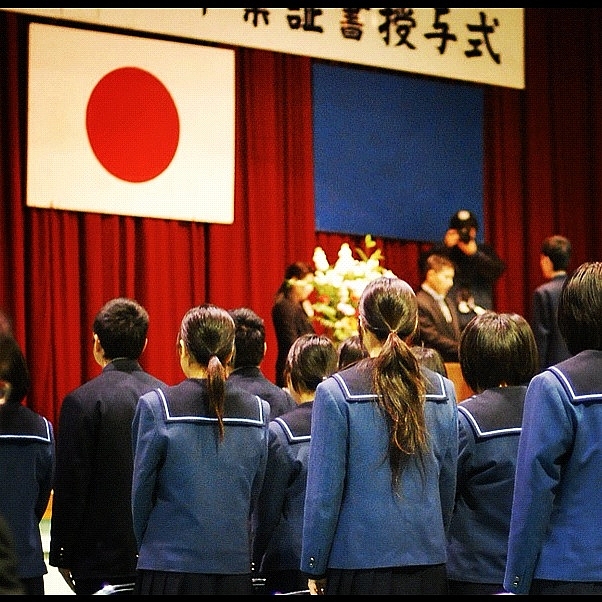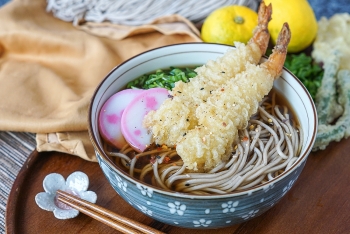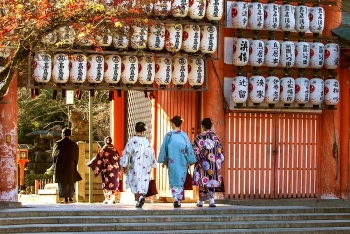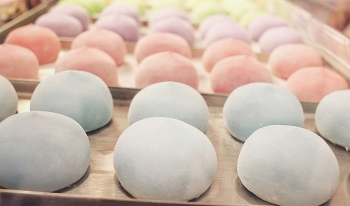Japanese National Anthem: History, Full Lyrics, Shortest and Oldest In The World
 |
| Photo TrumpetBlog |
Japan has one of the oldest national anthems in the world. ‘Kimigayo’ is the country’s single-verse national anthem, based on the words of a classical Japanese waka poem written by an unknown author during Japan’s Heian period (794–1185).
As well as being one of the oldest known national anthems, it is also the world’s shortest, standing at just a single verse.
Who composed the Japanese national anthem?
Though its lyricist remains a mystery, "Kimigayo" was originally collected as a poem in the ca. 920 volume of the poetry anthology Kokin Wakash. Japan adopted the poem as their national anthem in 1869, and Irish musician John William Fenton composed music to go along with the words. Unfortunately, the solemnity required of a national anthem prevented Fenton's melody from being adopted as the national anthem until 1880, when composer Hiromori Hayashi, along with his son Akimori Hayashi and disciple Yoshiisa Oku, wrote a new melody that incorporated some of Fenton's original ideas.
But, this was not the final chapter. The modern arrangement was created when German composer Franz Eckert added Western-style harmony to the song. In 1888, it became Japan's official national anthem.
What does Kimigayo mean?
The prayer reads, "May the Emperor's reign remain forever," with the term "kimi" referring to the Emperor. There was a period when the emperor had absolute power over his subjects, and that's when this poem was written.
Imperial rule was absolute in Japan during World War Two. Several Asian countries were invaded by the Japanese imperial army. A belief in battling for the Emperor's holiness provided the necessary inspiration.
When the Constitution of Japan was rewritten after World War II, the Emperor was reduced to a ceremonial role and stripped of his political authority. Since then, a number of people have raised concerns about using "Kimigayo" as the national anthem.
But it's still performed at homegrown celebrations, abroad, in classrooms, and on public holidays.
History and controversies around the Japanese national anthem
 |
| Photo WordPress |
In 1880, German composer Franz Eckert adapted music by court composers Yoshiisa Oku and Akimori Hayashi for use as the tune for the Japanese national anthem.
Irish musician John William Fenton, who headed a military band in Japan at the dawn of the Meiji period, had submitted a different melody before 'Kimigayo' was completed and chosen as Japan's official song in 1888. Fenton's version was rejected by the public and never accepted.
After WWII ended and parliamentary democracy was established in Japan, the arrangement of 'Kimigayo' by Eckert stayed in place as the de facto anthem as long as Emperor Hirohito was allowed to remain on the throne.
In 1999, "Kimigayo" was officially reinstated as Japan's national and imperial anthem by the Act on National Flag and Anthem.
A short hymn about the worship of Japan's monarch and the hope for a long and successful reign, "His Imperial Majesty's Reign" is the most common translation of the anthem's title.
So, it is mired in debate. The song's connection to militarism and the near-worship of the monarch espoused by its lyrics raises eyebrows among many in Japan and other Asian countries.
The song is sung at the Olympics and other international athletic events, but it is also taught in Japanese classrooms, where the government has recently come under fire for pressuring teachers to show proper respect for the Japanese flag and anthem.
Despite an edict that instructors must respect the national song and flag in schools or face termination, teachers in Hiroshima in 1999, Osaka in 2010, and more widely in 2011 and 2012 staged rebellions in which they refused to display the song or perform it. Protests against playing "Kimigayo" in schools were put down by teachers' unions and legal processes.
READ MORE: ONLY in JAPAN: Top Quirky Drinks You Should Try
The old version of KimigayoUntil arriving at the current version, kimigayo had other previous versions with more stanzas, some had up to 3 parts, while the current anthem is only one part with 5 phrases. Its use changed between the years 1880, 1888 and 1999. The composers of the music of the Japanese anthem was Hiromori Hayashi, Yoshiisa Oku. Below see how it is played in the score or cipher, along with the lyrics in hiragana. |
What are the lyrics in Japanese?
君が代は
千代に八千代に
細石の
巌と為りて
苔の生すまで
Kimigayo wa
Chiyo ni yachiyo ni
Sazare-ishi no
Iwao to narite
Koke no musu made
Lyrics to the Japanese national anthem in English
May the reign of the Emperor
continue for a thousand, nay, eight thousand generations
and for the eternity that it takes
for small pebbles to grow into a great rock
and become covered with moss.
Second national anthem of Japan
Together with the Kimigayo National Anthem, Kiyoshi Nobutoki also performed a very well-known national song called Umiyukaba [], the lyrics of which are based on a poem from the 8th-century Japanese poetry anthology chka tomo no Yakamochi no Man'ysh (poem 4094).
Umi Yukaba
Subsequently, it was widely adopted by the Japanese Imperial Navy. This trend had widespread adoption before, during, and after the Second World War. The gunka "Umi Yukaba" and others like it were outlawed after Japan's surrender in 1945.
However now that the occupying nation (the USA) has lifted the restriction, the song is regarded appropriate enough to be performed publicly by Japan's Maritime Self-Defense Force, which is often referred to as the "second national anthem" because of its brevity.
Iconic symbols of Japan
 |
| Photo give me japan |
There are many interesting customs and superstitions in Japanese culture. Most of them are very positive and concern good luck in people’s lives. Thanks to this, it is undoubtedly easier for the Japanese to overcome various challenges and problems, as they believe that they deserve happiness.
Japan - The Land of the Sakura Blossoms
The word for cherry blossom in Japanese is (Sakura). To this end, the nickname "Land of the Cherry Blossoms" is not without merit when applied to Japan. In late March and early April of each year, millions of beautiful pink buds burst forth from the trees. Hence, the Japanese have a unique tradition known as hanami (), which translates to "viewing blossoms," to mark this time of year. Several tours follow the path of blossoming cherry trees at this season, which causes hotel and plane ticket rates to climb. This specific Japanese icon serves as a timely reminder of youth, the ephemeral aspect of life, and the arrival of spring.
Holy Mount Fuji
One of Japan's most recognizable emblems is Mount Fuji. It's a mountain that also happens to be an active volcano. Also, it is the country's highest point (3766 m ASL). Being recognized as a World Heritage Site by UNESCO is a testament to its aesthetic value. Despite the mountain's remote location and the immensity of the surrounding landscape, it is impossible to avoid running with other tourists because to the abundance of hiking trails in the area. During the busiest times of the year, visitors will have to wait in huge lines to make it to the top, but the magnificent view will be well worth the wait. Every person who calls the Land of the Rising Sun home should make a pilgrimage to the sacred mountain of Fuji at least once in their lifetime, according to the Japanese themselves. Whoever reaches the pinnacle of success might consider himself a great guy.
Origami - the art of folding paper
Similarly to the previously mentioned bonsai tree, Origami (折り紙) originated in China. However, once again, this art form became very popular in Japan and it is there that it started to truly flourish. Therefore, origami is strongly associated with the Land of the Cherry Blossoms. These amazing paper figurines, often arranged in an extraordinary manner, are one of Japan’s signature symbols. When assembling such paper shapes, one should never use scissors, glue or additional decorations. This is the actual phenomenon behind origami art - it is all about creating works of art using only one’s hands, paper and creativity. Special origami museums can also be found throughout Japan.
Samurai - a Japanese knight
The Samurai were ancient Japanese warriors who were completely devoted to their ruler. They were guided by honour and the unwritten bushidō (武士道 – the warrior’s path) code. They gained recognition through valour and enlightenment. They never parted with their main weapon - the katana, which symbolised their constant readiness to fight and in itself was the very soul of the samurai. These Japanese warriors are a symbol of courage, loyalty and persistence.
 7 Popular Foods to Eat on New Year in Japan 7 Popular Foods to Eat on New Year in Japan Many countries and cultures have their own traditional foods for celebrating New Year, and Japan is no exception. |
 How to say Happy New Year in Japanese How to say Happy New Year in Japanese New year could be considered one of the most important events in Japan. For foreigners living here, there are several ways to say "Happy New ... |
 Step-by-step Guide to Make a Fresh and Savory Mochi Step-by-step Guide to Make a Fresh and Savory Mochi Mochi is a Japanese rice cake that is famous all around the world thanks to the fresh and savory taste. Here is an easy way ... |



























